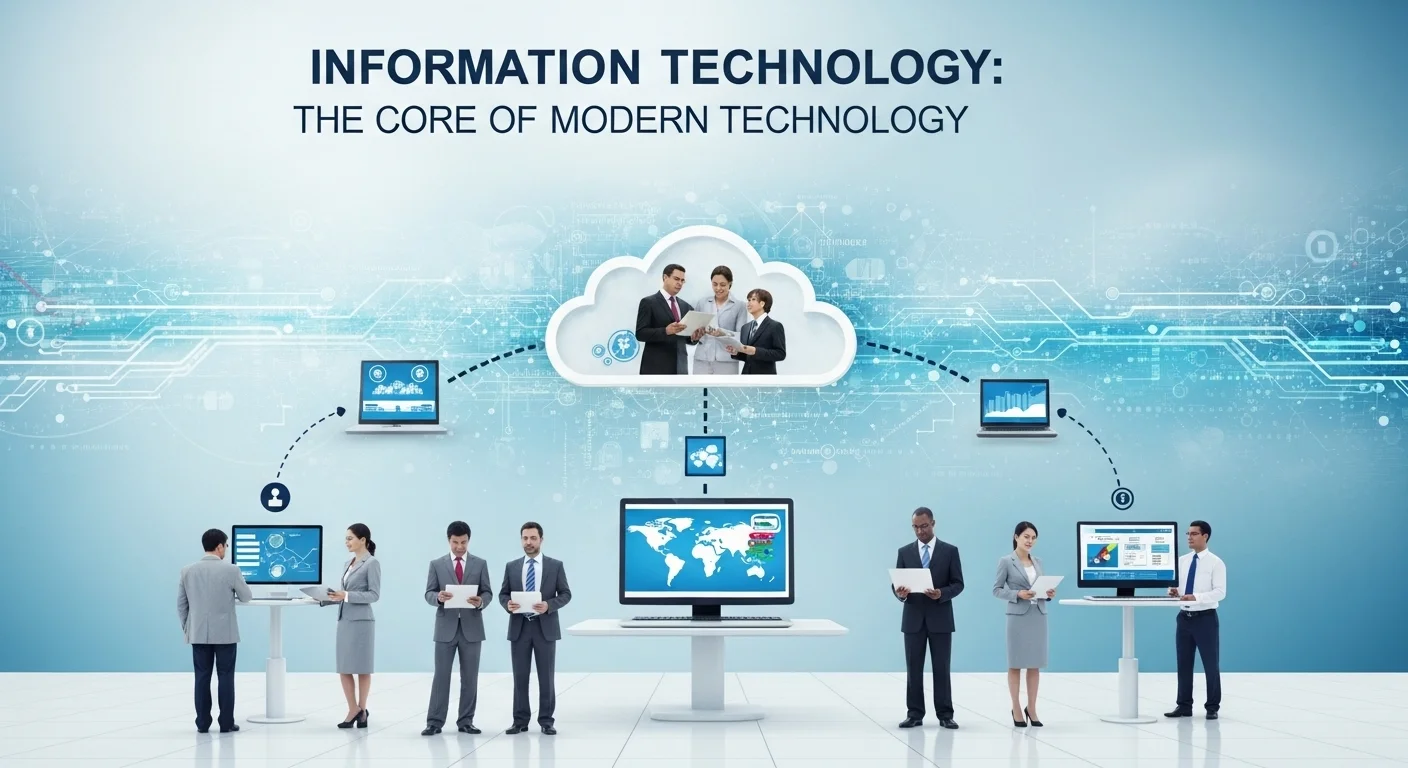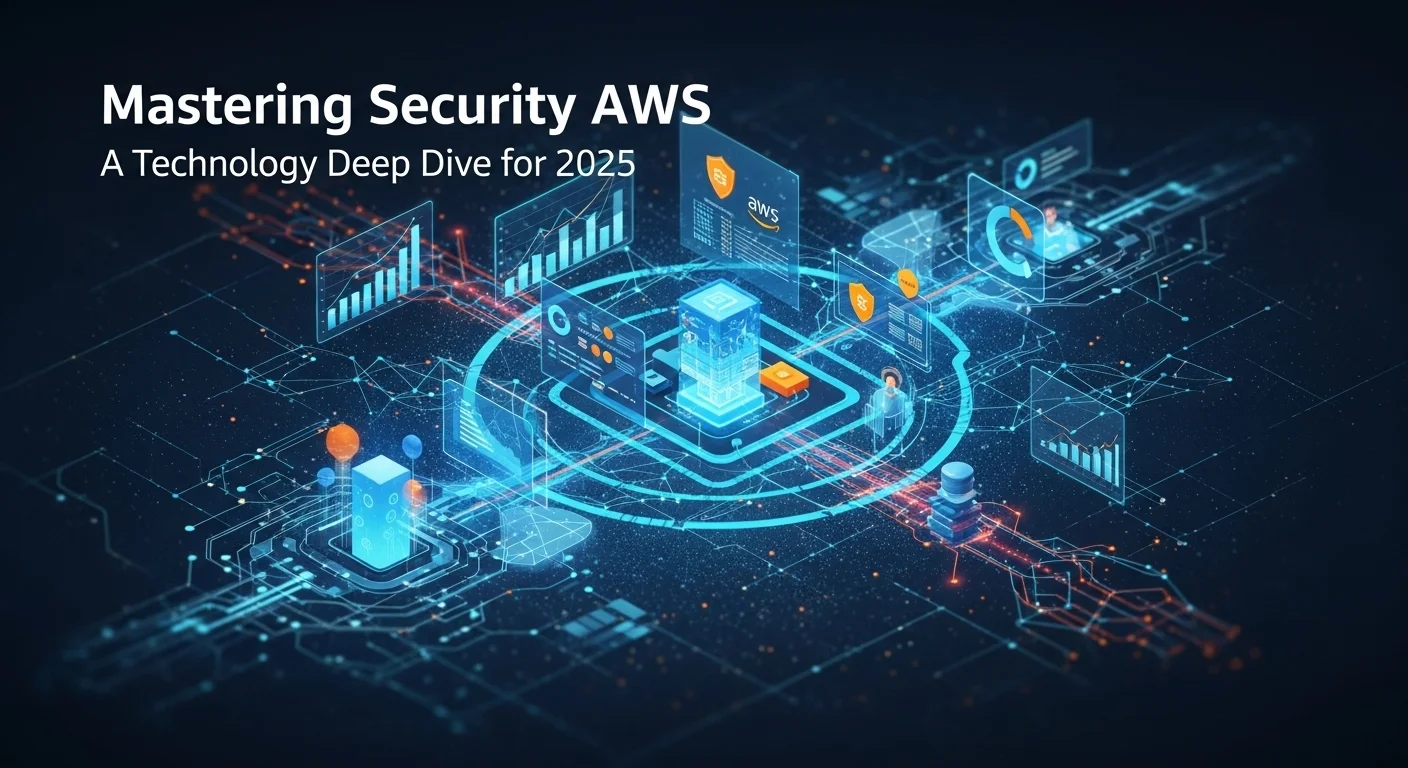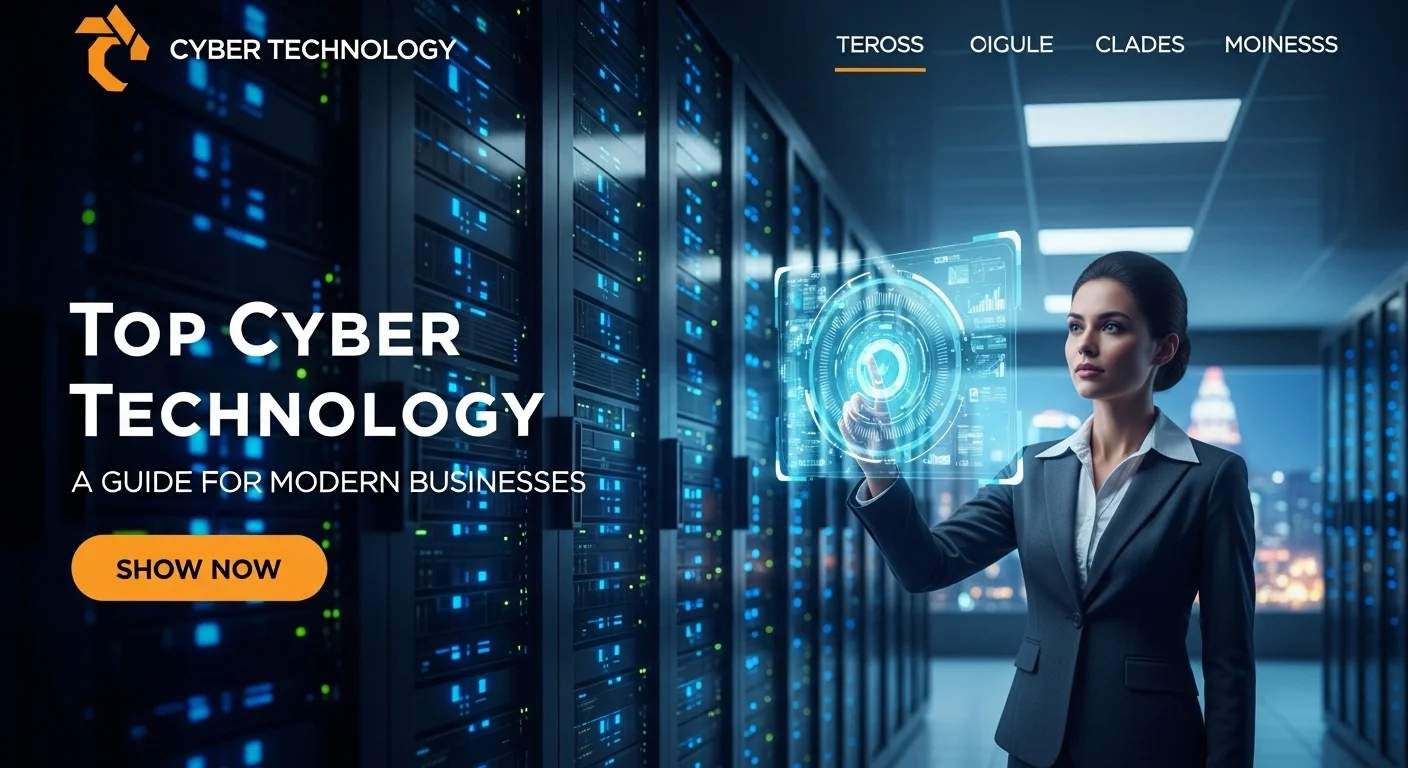Information Technology Explained: A Guide to Succeeding in Tech

Executive Summary
In my twenty years as an IT strategist, I've seen technology evolve from a back-office function to the very heart of business and society. The term 'Information Technology' or IT gets thrown around a lot, often making it sound more complicated than it needs to be. This guide is my attempt to cut through the noise. I'll walk you through what IT really is, using simple language and real-world examples I've encountered along the way. We'll explore how computers are just the beginning, how IT is revolutionizing sensitive fields like healthcare, and what it takes to build a successful career with the right training. My goal is to give you a clear, practical understanding of IT's power, helping you see the opportunities for innovation and growth in our digital world. This is your personal roadmap to mastering Information Technology.
Table of Contents
Table of Contents
- What Is Information Technology, Really?
- Why IT is a Game-Changer for Business
- A Critical Field: Health Information Technology (HIT)
- Building Your Skills with IT Courses
- The Core Pillars of IT
What Is Information Technology, Really?
Let's start by demystifying the term. Information Technology (IT) is essentially the use of computers, networks, and software to manage information. Think of it as the central nervous system of our digital world. It's not just about fixing laptops or installing software—that’s a tiny piece of the puzzle. At its heart, Information Technology is a strategic tool that powers almost everything we do. The connection between computers and information technology is fundamental: computers are the muscle, providing the processing power, while IT is the brain that gives that power purpose, creating the systems that allow us to communicate, create, and share information on a global scale. Understanding this is the first step to thriving in today's tech-driven environment, no matter your field.
You can't talk about modern advancements without acknowledging IT as the silent partner. Take Artificial Intelligence (AI). AI needs enormous amounts of data to learn and make decisions. Where does that data live? How is it processed and kept secure? That’s all handled by the IT infrastructure—the powerful servers, lightning-fast networks, and massive databases. I've seen AI projects with brilliant algorithms fail simply because the underlying IT foundation wasn't strong enough. The same goes for the Internet of Things (IoT). Your smart watch, your connected thermostat, your car—they are all part of a huge network built and managed by IT principles. So, IT isn’t just another piece of technology; it's the foundational layer that allows everything else to work together.
Why IT is a Game-Changer for Business
In the business world, the shift has been monumental. I remember when the IT department was stuck in the basement, seen purely as a cost. Today, it's in the boardroom, driving strategy and creating a competitive edge. Companies use IT to streamline every part of their operation. Think of systems that manage everything from manufacturing and inventory to sales and marketing in one seamless flow. This integration, all powered by IT, allows leaders to make smarter, faster decisions based on real data, not just guesswork. Customer Relationship Management (CRM) platforms are another perfect example, using technology to build and maintain strong customer relationships, which is the key to loyalty and growth.
A Critical Field: Health Information Technology (HIT)
Nowhere is the impact of IT more critical than in healthcare. This specialized area, known as health information technology (HIT), is about using technology to improve patient care and save lives. The most visible example is the Electronic Health Record (EHR). By replacing paper charts with secure, real-time digital records, EHRs reduce medical errors, improve care coordination, and give doctors the information they need, when they need it. I've worked with hospitals during their transition to EHRs, and while challenging, the long-term benefits to patient safety are undeniable. HIT is also the engine behind telehealth, advanced medical imaging, and the data analysis needed to track diseases and improve public health. Of course, protecting this sensitive data is a massive responsibility, making cybersecurity in HIT an absolute priority.
Building Your Skills with IT Courses
With such high demand, it's no surprise that information technology courses are a popular pathway to a rewarding career. These programs are designed to give you both the theoretical knowledge and the practical, hands-on skills you need. You'll start with the fundamentals—hardware, software, networking—and can then branch out into exciting specializations like cybersecurity, cloud computing, or data analytics. From my experience, the best information technology courses are those that prepare you for industry-recognized certifications from companies like Cisco, Microsoft, or CompTIA. These certifications are like a stamp of approval that employers really value, proving you have the skills to do the job.
The Core Pillars of IT
To wrap up the basics, IT stands on a few key pillars. Hardware is the physical stuff: servers, computers, routers. Software is the code and applications that tell the hardware what to do. Networks are the communication lines that connect everything, with the internet being the ultimate example. And finally, Data is the lifeblood. The ability to manage, secure, and analyze data is what unlocks its immense value for businesses and society. Understanding how these pillars work together is the key to grasping the full scope and power of information technology.

A Complete Guide to IT in Business and Technology
To truly leverage information technology, you need to go beyond the basics and understand its strategic application in business. This guide is your roadmap to the technical methods and business frameworks that turn IT into a powerhouse for growth and innovation. Whether you're a startup founder or a corporate leader, mastering these concepts is key to your success.
Choosing Your Tech Foundation: IT Infrastructure Explained
At the core of every modern business is its IT infrastructure, which generally falls into three models. The traditional on-premise model means you own and manage all your hardware in your own building. It offers total control but comes with high costs and maintenance. Then there's the cloud, where you rent services from providers like Amazon Web Services (AWS) or Microsoft Azure. The cloud gives you incredible flexibility and scalability, and I've helped many businesses slash their upfront costs by moving to it. The third option is a hybrid model, which mixes on-premise and cloud services to get the best of both worlds. Choosing the right model is a major strategic decision that hinges on your budget, security needs, and growth plans.Cybersecurity: Your Most Important Investment
I can't stress this enough: cybersecurity is not an optional extra. In today's connected world, it's your most critical defense. It’s a broad field covering everything from protecting your network and applications to securing your data and training your people. I've seen firsthand how a single, clever phishing email can bring a company to its knees. A strong security strategy involves multiple layers—firewalls, encryption, multi-factor authentication—but the most important element is creating a culture of security awareness. In specialized fields like health information technology, a data breach isn't just a financial problem; it can put patient lives at risk.Turning Data into Decisions
Businesses today are drowning in data from sales, social media, and smart devices. The magic lies in managing that data and pulling out valuable insights. This is where you hear terms like data warehouses (for structured data) and data lakes (for raw data). Tools like Tableau or Power BI then help you visualize this information, turning complex spreadsheets into clear charts that tell a story. I've watched leadership teams have 'aha!' moments during presentations where data visualization finally made a complex problem crystal clear. Making decisions based on this kind of evidence is what separates thriving companies from those that fall behind.The Path to Expertise: Education and Certifications
A formal education from information technology courses gives you the foundation, but in the fast-moving world of tech, continuous learning is everything. This is where professional certifications come in. They prove you have specific, up-to-date skills. An AWS certification for cloud, a CISSP for security, or a CCNA for networking tells employers you're serious about your craft. I always advise people starting out to map their career goals to relevant certifications. Many information technology courses are even designed specifically to prepare you for these exams, creating a clear path from the classroom to a great job.The needs of a small business versus a large enterprise are vastly different. A small business might thrive using cloud-based 'Software-as-a-Service' (SaaS) tools like Microsoft 365 or Salesforce, which are cost-effective and easy to manage. A large corporation, however, often juggles complex hybrid systems, legacy software, and strict compliance rules. Their it information technology department is a major operation focused on governance and risk management. Understanding these differences is crucial for implementing the right solutions. It’s all about fitting the technology to the unique needs of the organization, not the other way around.

Practical Tips to Master Your Tech Experience
Having the right technology is one thing; using it effectively is another. Here are some practical tips and strategies I've learned over the years to help you improve your tech experience, boost your security, and stay ahead of the curve. This is about making technology work for you, not the other way around.
Think Strategically: Build an IT Roadmap
One of the biggest mistakes I see is reactive, chaotic IT spending. The best organizations operate with a strategic IT roadmap. This is a simple plan that outlines your tech goals and projects for the next one to three years. It ensures your IT spending supports your actual business objectives and helps you plan for upgrades, new software, and security improvements in a calm, orderly fashion. It's the difference between being in control of your tech and having your tech control you.Simple Habits for Strong Security
Cybersecurity starts with good habits. Use a password manager to create and store strong, unique passwords for every site—it's a game-changer. Turn on multi-factor authentication (MFA) everywhere you can; it's one of the most effective defenses against account takeovers. Keep your software updated, as these updates often contain vital security patches. And please, learn to spot phishing emails. Be skeptical of urgent requests for information or suspicious links. In sensitive fields like health information technology, this diligence is not just a best practice; it's a professional obligation.Choose the Right Tools for the Job
The right software can transform your productivity. For managing projects and teams, tools like Asana or Jira are fantastic. For communication, platforms like Slack or Microsoft Teams keep everyone connected and reduce email clutter. For customer management, a CRM like HubSpot or Salesforce is essential. My advice? Don't just buy the software. Invest time in setting it up properly and training your team. A powerful tool used poorly is just a waste of money.Stay Curious and Keep Learning
The tech world changes in the blink of an eye. You have to be a lifelong learner to keep up. I make it a habit to follow trusted tech news sources. A resource I always recommend to aspiring tech pros and leaders is TechCrunch, as it offers great insight into the business of technology. Attending webinars and industry events is also invaluable. For a deeper dive, consider enrolling in advanced information technology courses or tackling a new certification. The most successful people I know in this field are the most curious.Looking ahead, you need to have trends like Artificial Intelligence (AI) and the Internet of Things (IoT) on your radar. Start thinking about how AI could automate tasks in your business or how IoT could provide valuable data. Ultimately, a great IT strategy is about people. It's about building a culture where everyone is digitally literate and security-conscious. The IT department should be a strategic partner that empowers everyone in the organization. By adopting this mindset, you can navigate the complexities of modern technology with confidence and turn information technology into your greatest asset.
Expert Reviews & Testimonials
Sarah Johnson, Business Owner ⭐⭐⭐⭐
As a small business owner, I found this overview of Information Technology really helpful. I'd love to see a follow-up with more case studies on how SMBs can implement these strategies on a tight budget.
Mike Chen, IT Consultant ⭐⭐⭐⭐
A solid, comprehensive guide to IT. As a consultant, I appreciate the accurate breakdown of infrastructure and cybersecurity. This is a great starting point for anyone looking to deepen their understanding.
Emma Davis, Tech Expert ⭐⭐⭐⭐⭐
Finally, an article that connects all the dots! The section on health information technology was particularly insightful. This is one of the clearest explanations of IT's vital role in the modern world that I've ever read.



